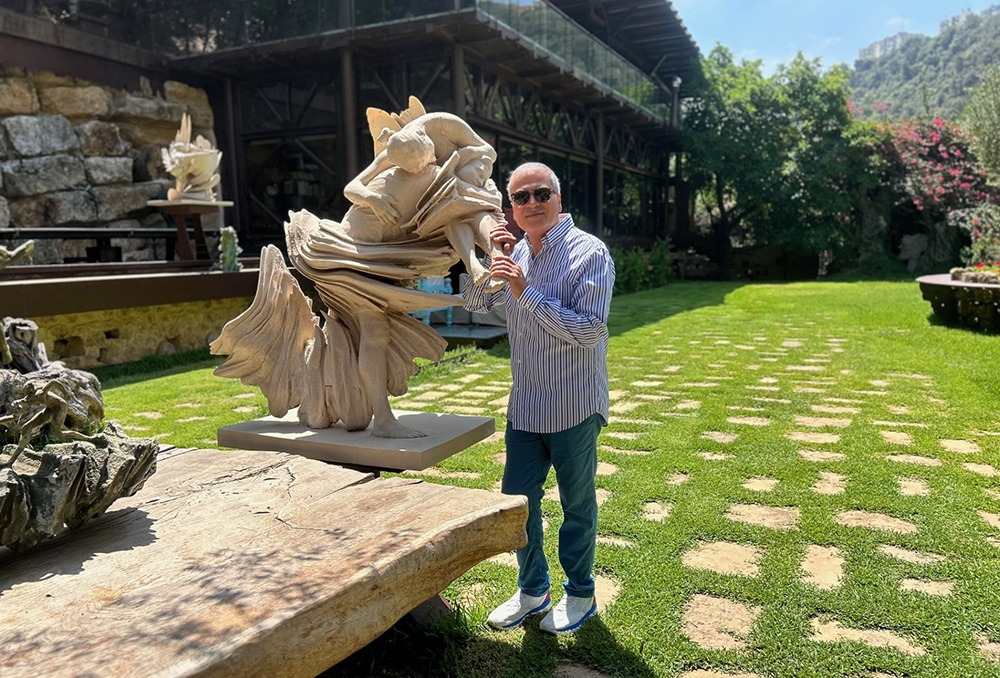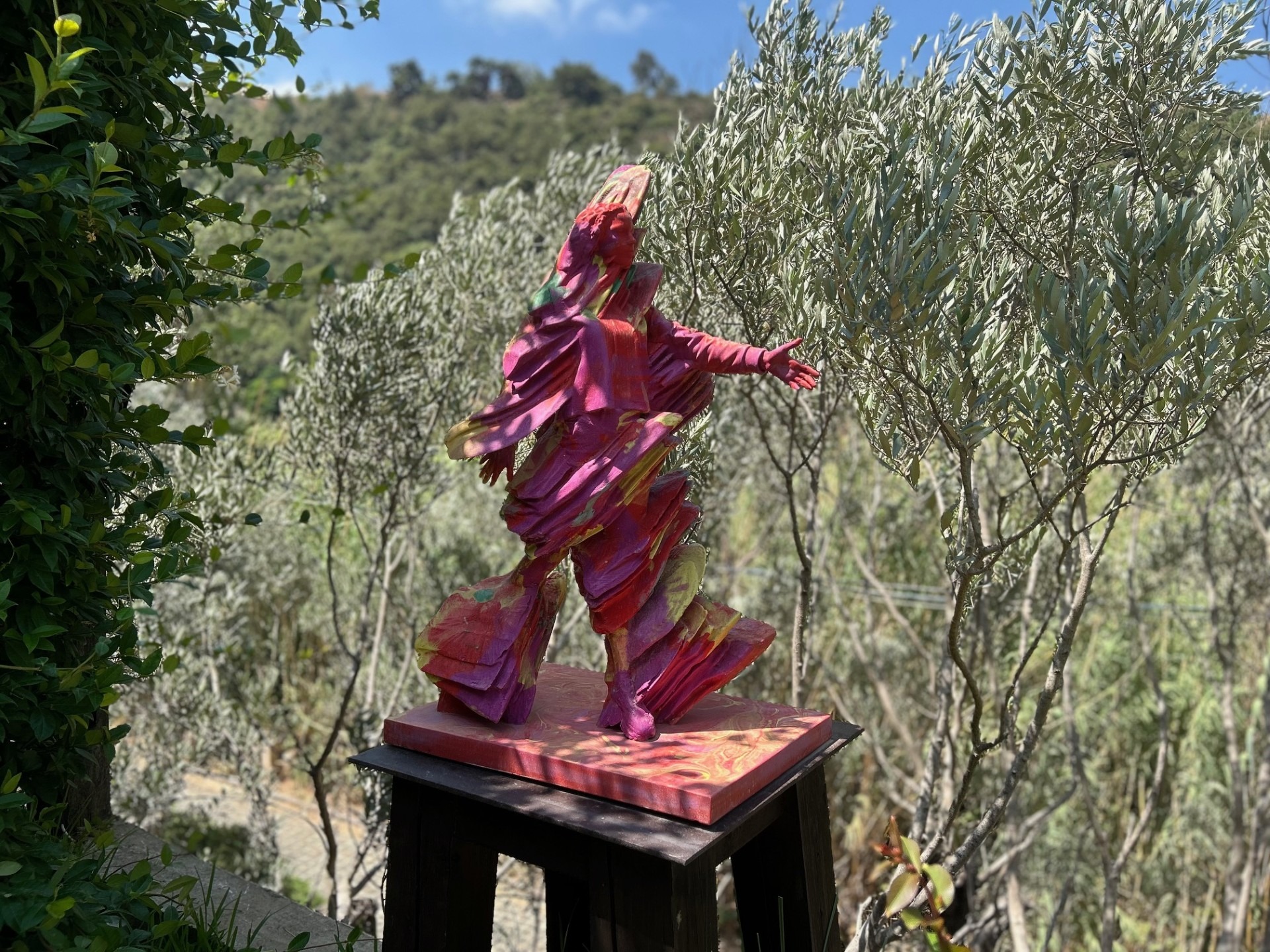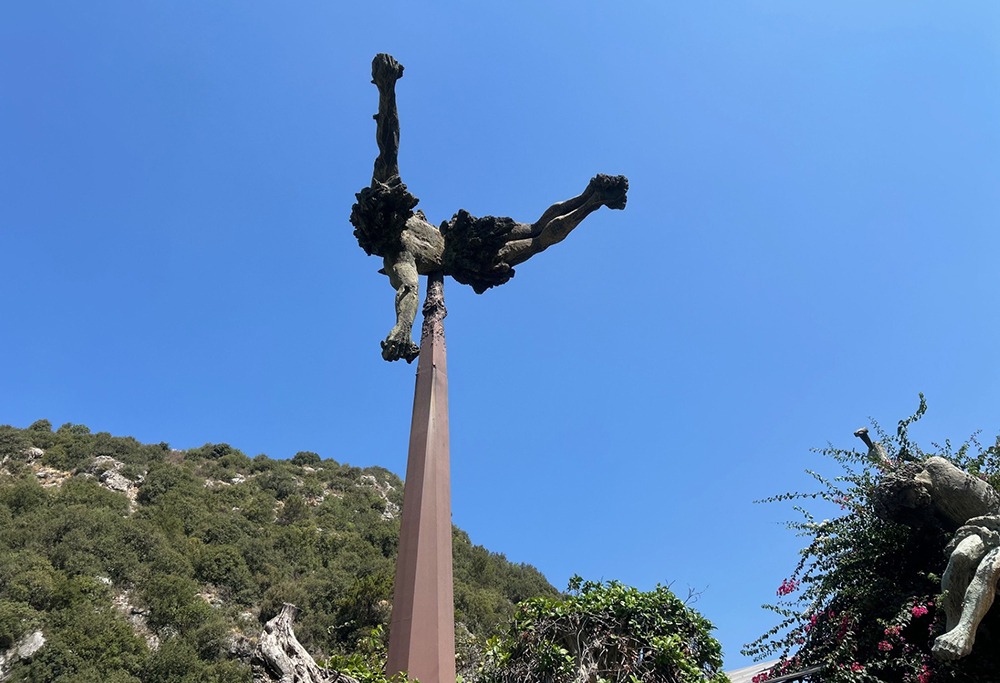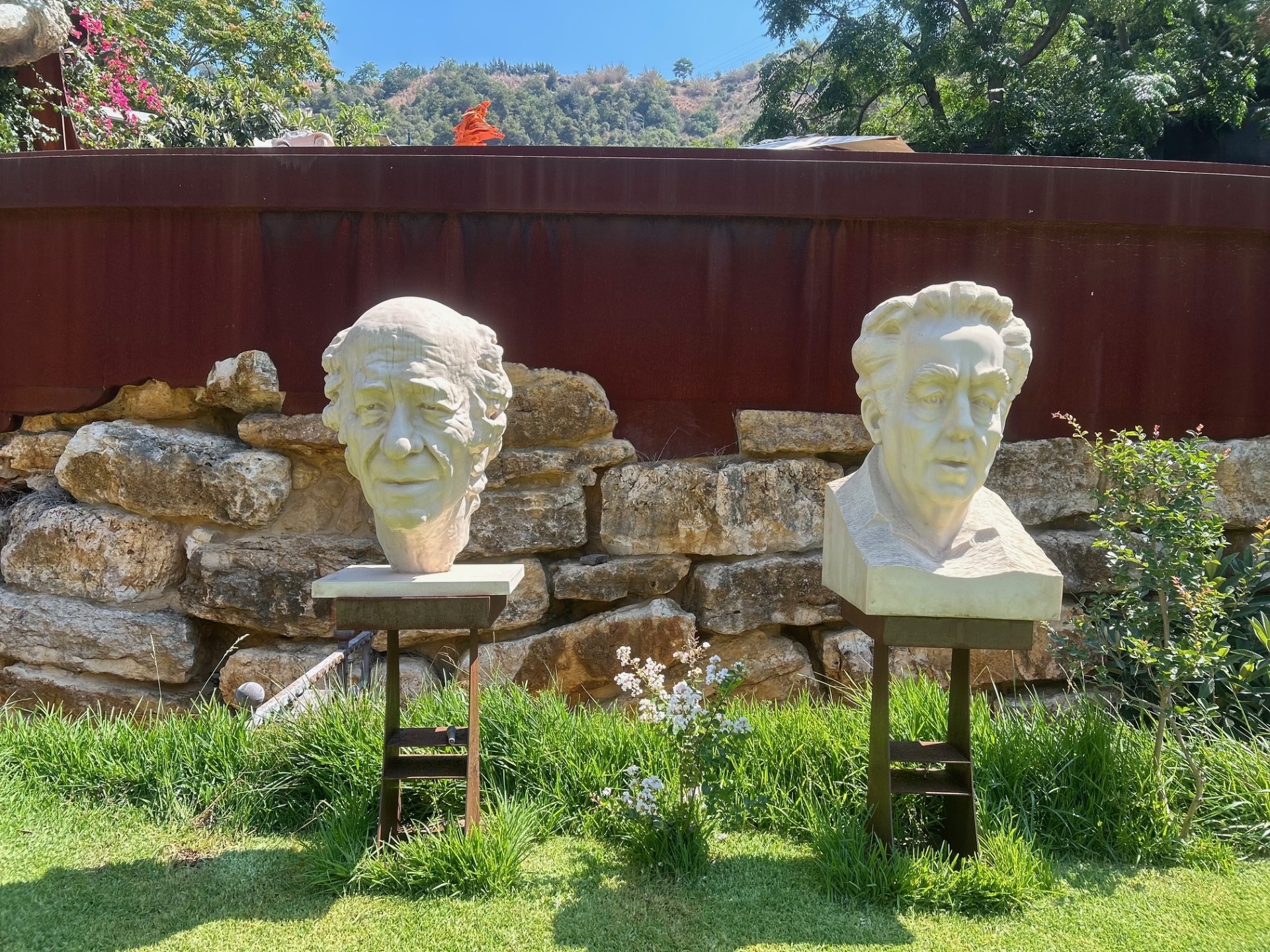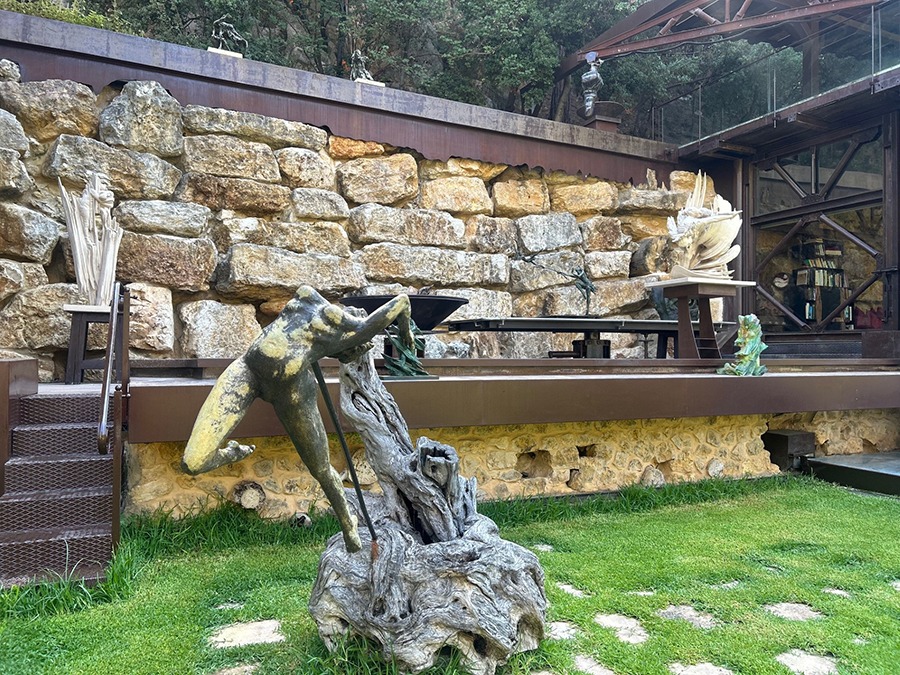Rudy Rahme is no stranger to Lebanon’s bustling art scene. The sculptor, artist and poet has spent the last three decades creating magnificent works, earning him immense respect at home and abroad.
Born in 1967 in Bcharre, North Lebanon, Rudy Rahme studied at the Lebanese Academy of Fine Arts (ALBA) and the Spinelle Academy in Florence, Italy. He represented Lebanon at several sculpture symposia in Lebanon, France, Italy, Switzerland and the Gulf countries – scoring awards such as the gold medal for Lebanese poetry and the Sursock Museum Award.
Some of Rahme’s most iconic works include “Windmill of Time” at the Jeita Grotto, the various sculptures at the entrance to Beirut’s UNESCO Palace and the altar at the Church of St. Joseph in Mtayleb, Metn.
Despite all of his success, however, Rahme remains humble, considering his talent a gift from God, inspired by nature and his rural upbringing.
“When I sit to sculpt, memories of the Kadisha Valley, its movement and energy, come flooding back. This appears in many of my works. Bcharre’s nature is the foundation of my art.”
Among Rahme’s major achievements is “La Martine Cedar,” carved from dead cedar trees in Bcharre, which would later become the world’s tallest wooden sculpture at a height of 39m (recognized by Guinness World Records).
“I wasn’t really intending to produce the world’s tallest wooden sculpture. I was part of the Cedar Committee from a young age and they wanted to thank the French people who had supported them. I used to see how people cut our cedar forests to make tiny souvenirs and would think, ‘Why are we cutting them down? We should preserve them.’ When they asked me what we could do to thank the French, I told them I wanted to carve the three dead cedar trees that had died during the 1985 storm, but I wanted to carve them right where they stood. They would form a trinity to represent the name of the forest (God’s Forest); and that’s how it started,” he says.
In addition to his visual art, Rudy Rahme is also a published poet. His poetry book delves into themes of identity, beauty and the metaphysical. His words often mirror the same emotional depth and spiritual inquiry found in his sculptures, offering another dimension to his artistry.
One of Rahme’s most poignant recent works is “Walking Rock,” a sculpture that blends stone shaped by time and cedar branches: an emblem of Lebanon’s endurance. The piece captures the essence of a Lebanese individual suspended between stagnation and emergence, caught between struggle and growth. Technically, it contrasts rough textures and smooth surfaces, symbolizing internal and external dualities. Rahme achieved this by employing multiple sculpting techniques, creating a tactile metaphor for the Lebanese spirit.
Although Rahme is best known for his sculptures, he is preparing a major exhibition of large-scale oil paintings. The collection will include 30 substantial works, offering viewers a more intimate yet grandiose window into his creative mind. This marks a significant artistic expansion and reflects his constant evolution as a visual storyteller.
Rahme is working on a number of overseas exhibitions as well as significant projects in Lebanon.
Honoring the Beirut Port Explosion
Rahme is deeply involved in a major commemorative project centered on the Beirut port explosion. In collaboration with the Governor of Beirut, Marwan Abboud, and Minister of Public Works Ali Hamieh, he is planning to build a museum on a plot of land expected to be donated by the government. Central to this project is a colossal 54-meter-tall sculpture that will serve as a monument to resilience, memory and national rebirth.
Sculpting faith and history in Diman
In the Patriarchal Forest of Diman, Rahme is transforming a 26-meter-tall dead cedar tree into a powerful sculpture of Christ bearing multiple crosses. Inspired by the lineage of Maronite patriarchs, the artwork will depict Christ offering his hands to carry the burdens of the people — an act of shared suffering and hope. This symbolic piece bridges Lebanon’s spiritual heritage and its contemporary struggles.
Tribute to Beirut’s fallen firefighters
In response to the tragedy of the Beirut Port explosion, Rahme is also creating a sculpture in collaboration with the Beirut Fire Department. The work will honor the fallen firefighters who gave their lives that day, preserving their sacrifice in enduring form.
Sacred spaces in Miziara and Harissa
Rahme’s religious commissions include the recent reopening of the Maria Goretti Church in Mizaara after four years, where his contributions were part of the restoration. In Harissa, he helped design a new prayer garden featuring sculptures of Jesus, Saint Charbel and Our Lady of the Snow (Saydet el Talj), reinforcing the sacred presence in one of Lebanon’s most cherished pilgrimage sites.
Sculpture on a big scale
Scale is central to Rahme’s vision. “As a child, I longed to see monumental sculptures in Lebanon like those found in European cities,” he says. Today, he creates large-scale public art in hopes of cultivating a similar cultural tradition. For Rahme, monumental art has the power to educate, inspire and shift collective behavior. But these projects demand expertise and funding, resources he often seeks to secure in order to bring his visions to life.
His passion for building monumental structures also stems from his background. “My father was an engineer, so I learned early how to integrate engineering into artistic practice. This technical knowledge enables me to conceive and execute works of unprecedented size and complexity in Lebanon,” he says.
Rahme’s relationship with Lebanon is both emotional and philosophical. The country, to him, is more than geography; it’s a living force that constantly blooms, even through adversity. He draws inspiration from cultural figures like Said Akl, Joseph Abou Daher and Elias Rahbani.
To Rahme, Lebanon is unmatched in beauty and depth. Indeed, he continues to create in hopes that it will return to its former glory, “not through politics, but through the collective heartbeat of its artists, its culture and its people.”
Domaine Rudy Rahme
ChatGPT said:
To visit Domaine Rudy Rahme
Domaine Rudy Rahme is open to the public, but visitors must book in advance by calling +961 76 476 400. Private tours are also available.
If you enjoyed reading this article on Rudy Rahme, check out our interview with artist Nabil Nahas.
Loading

